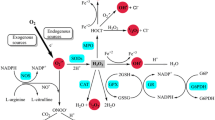Summary.
Oxidative damage of biological macromolecules is a hallmark of most neurodegenerative disorders such as Alzheimer, Parkinson and diffuse Lewy body diseases. Another important phenomenon involved in these disorders is the alteration of iron and copper homeostasis. Data from the literature support the involvement of metal homeostasis in mitochondrial dysfunction, protein alterations and nucleic acid damage which are relevant in brain function and consequently, in the development of neurodegenerative disorders. Although alterations in transition metal homeostasis, redox activity, and localization are well documented, it must be determined how alterations of specific copper- and iron-containing metalloenzymes are also involved in Alzheimer disease. The clarification of these phenomena can open a new window for understanding the mechanisms underlying neurodegeneration and, consequently, for the development of new therapeutic strategies such as gene therapy and new pharmaceutical formulations with antioxidant and chelating properties.
Similar content being viewed by others
Author information
Authors and Affiliations
Rights and permissions
About this article
Cite this article
Moreira, P., Siedlak, S., Aliev, G. et al. Oxidative stress mechanisms and potential therapeutics in Alzheimer disease. J Neural Transm 112, 921–932 (2005). https://doi.org/10.1007/s00702-004-0242-8
Received:
Accepted:
Published:
Issue Date:
DOI: https://doi.org/10.1007/s00702-004-0242-8




